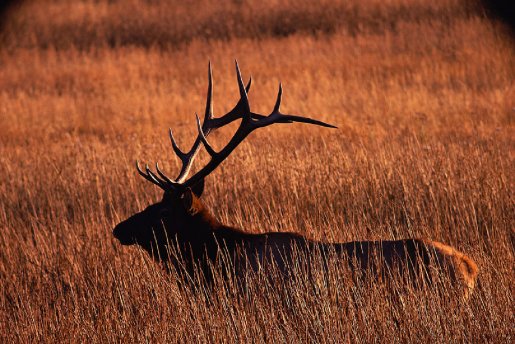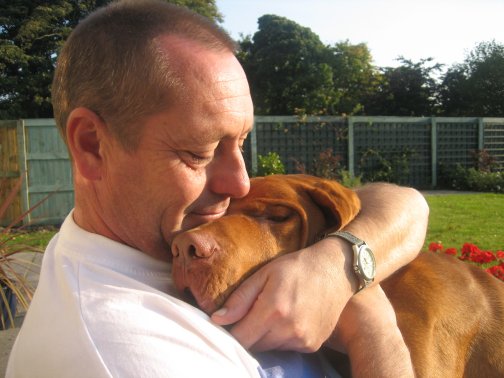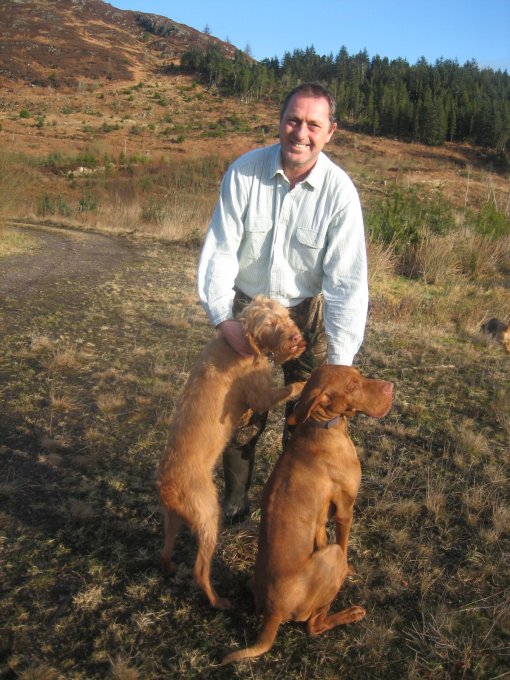The Working Hungarian Wirehaired Vizsla
Breed Standard
About the Breed
About Me and the Dogs
Home Page
View our dogs
History of the Breed
History of the Breed in the United Kingdom
The breed at work -
Shooting
Falconry
Deer Stalking
Puppy rearing
Variations in Coat
General Information
Links to Other Gundog Sites
| This was written for me by Ged - A very dear friend of
mine, shortly before his very sudden death in 2009 at the age of 45 years, and my heart will always remember that wonderful smile, and his incredible kindness. To Donna Hall (his partner) and all his family - This is for you |
A MORNING OUT
|
 |
| A 3 am alarm bell rings. I roll over to knock it off,
quick wash and a cup of tea and out to the car. Henry, my Wirehaired Vizsla, is
sat bolt upright in the back of the Discovery. He knows what's about to happen
and greets me with his usual enthusiasm. I slip off his noisy collar, he has a
quick run around, and jumps back in the car. Arriving at the forestry gate at 3.30 the day is just beginning to come alive. We drive into the forest block; I stop to take note of the wind direction. Perfect, the wind is blowing exactly where I wanted it to be. For the planned stalk it will be in our faces the whole time; crucial for successful deer culling. Out of the car as quietly as possible, rifle and roe sack on, binoculars and sticks. Henry begins to go into stealth mode. From now on there will be no talking, whistles or any loud noise. The stalk will be done in almost silence. Henry keeps looking to me to make eye contact, or looking at my hands to see if there is anything I am asking him to do. Palm up and he sits, point to my left side and he comes to heel, gentle hiss through my teeth and he lays down. He's now at heel half a body length in front of me taking in the scents of the forest, sniffing the air for any sign of deer. The intended target for today is an old buck I have seen a couple of times, which has gone past his best, and will not make it through the coming winter. Slowly, slowly we progress down the rides to a clearing where I expect him to be. Henry's nose hits the air and he seems to go on tiptoe. Great! there is a deer in front of us that I haven't seen. Everything stops. After 15 minutes I see something moving some 200 yards in front. The cover is up so it's difficult to spot the small roe deer, but damn, it's a doe with kids. We will have to wait it out until she moves off. A hiss and Henry lies down, and we sit and watch her with her kids as she feeds and moves back into the forest. Back to the stalk, we pass where she was and Henry sniffs and blows her scent, tracking exactly where she stood and walked. We come to the clearing and again he's on his toes with nose in the air. Again, I cannot see anything, but just from experience, if Henry tells me there is a deer there, there will be one. We sit still and quiet, I glance round the area and Henry sniffs. 500 yards across the clearing I spot the familiar white rump of a roe deer. I can't make out if it's a buck or not. We have to get closer, so keeping tight to the tree line we slowly make our way to the deer. 250 yards now and thankfully it's our intended target. I need to get still closer; a maximum of a hundred yards, but closer still will be better. The buck has fed into a gully and has gone out of sight,. Always a worry, as sometimes they slip away un-noticed and you never see them again. We are within 80 yards now and all has to stop. Henry sits to my hand signal with nose in the air. The deer is still there; I just can't see it. I open my sticks and ready my rifle, and another 20 heat beating minutes go by ...... There he is ! The buck has fed his way out of the gully some 20 yards closer to us. I put the cross hairs on to him, he turns broad side, and I put the cross hairs over his heart. Boom! I reload immediately. The buck drops on the spot. Silence. The birds have stopped singing for a while. We wait ten minutes to make sure the buck has expired. The grass is long and I can't see the carcass but I have marked the spot in my mind's eye. Now it's Henry's time to shine. With a wave of my hand he's off in front, nose down, zig zagging towards the deer. I watch him for signs that he's on to it. The signs say he has it, jumping up and down, wagging his tail. I call him back to me. We walk back to the deer. I make safe the rifle and begin the grallach, while Henry sits patiently by me and awaits his prize. I cut up the liver for him and he has a good feed. I put the roe in the sack and give Henry a good deal of attention, stroking him and telling him what a good lad he is, and he bounces about as if he's laughing. Stalk over, we can now just enjoy the walk back to the car. I set Henry for a run; he knows the job is done and it's free time. |
 |
| Henry is three-and-a-half now; I took him for his first stalk
with my old yellow lad when he was 6 months old. I have never seen a dog so
natural at taking up information, hardly any training was necessary. I'll have Wires now for the rest of my life; Henry has become a big part of me, along with Tilley my other Wire bitch. A better breed I don't think you could find: kind, gentle, intelligent and loving. Ged Brierley |
 |
Previous page